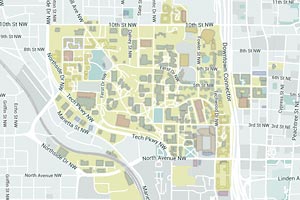Presenter: Bennett Brinson
Title: A New Search for Transient Sources of Astrophysical Neutrinos
Advisor: Dr. Ignacio Taboada, School of Physics, Georgia Institute of Technology
Date: Tuesday, June 17, 2025
Time: 2:00 p.m.
Location: Howey N201/N202
Zoom link: https://gatech.zoom.us/j/6030483336?pwd=CTYwYxFdE7rubE9Sf4oAbhSUGcevyv.1
Committee Members:
Dr. Nepomuk Otte, School of Physics, Georgia Institute of Technology
Dr. John Wise, School of Physics, Georgia Institute of Technology
Dr. Laura Cadonati, School of Physics, Georgia Institute of Technology
Dr. Justin Vandenbroucke, Department of Physics, University of Wisconsin-Madison
Abstract:
The emerging field of high-energy neutrino astronomy has seen many advances in the last few years, led by the IceCube collaboration, including the identification of several neutrino source candidates. However, the sources that contribute to the astrophysical diffuse neutrino flux are still largely unknown. This dissertation discusses three efforts to identify these astrophysical neutrino sources.
The first is an upgrade to IceCube's processing and filtering pipeline to improve the future collection of track-like data with good angular resolution. The filter I was responsible for, known as the Muon Filter, is the single most used data stream in IceCube, and I was responsible for modernizing and improving this filter for the first time since it was finalized in 2013.
The second is a search for neutrino emission from GRB 221009A, the brightest GRB of all time, in the 10-1000GeV range based on prior work conducted by Dr. Chujie Chen. This work set upper limits on neutrino emission from this GRB. Thanks to this GRBs exceptional brightness, I was able to use these upper limits to place strong constraints on GRB 221009A's baryon loading. A high baryon loading is needed if GRBs are a source of the highest energy cosmic rays.
The final effort was to identify neutrino transients across the entire sky. IceCube has conducted several such searches in the past, however I implement several improvements in sensitivity including the Pass2 data reprocessing effort, the improved point-source reconstruction methods, the KDE parametrization of the likelihood, and the expectation maximization method for picking flare durations, which combined give a \(\sim30\%\) improvement in discovery potential compared to previous results. This work searches for evidence fo transient neutrino emission from three catalogs of sources, including Seyfert galaxies, blazars, and a generic catalog of gamma-ray bright sources based on prior evidence of neutrino emission from the blazar TXS 0506+056 and the Seyfer-II galaxy NGC 1068. No significant evidence of neutrino emission is observed, and upper limits are placed on the most significant sources in each catalog. This work is currently being prepared for future publication, which will also include a search for transient neutrino emission across the entire northern sky.
Event Details
Date/Time:
-
Date:Tuesday, June 17, 2025 - 2:00pm to 3:00pm
Location:
Howey N201/N202


